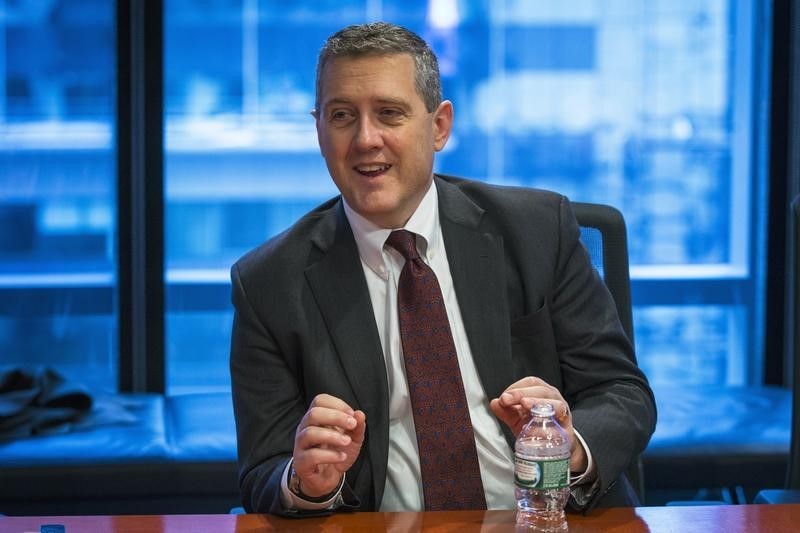MUNCIE, Indiana (Reuters) - Once the Federal Reserve decides to raise interest rates, perhaps as soon as next week, attention will shift to actual movement in inflation to see if the central bank's economic narrative proves accurate, St. Louis Fed President James Bullard said on Monday.
With unemployment low, policymakers have justified a liftoff of interest rates on the basis of "reasonable confidence" that inflation will rise to two percent and meet the Fed's second policy goal.
"We are concerned about all the variables ... The main one is particularly the inflation variable. We have to see if that actually starts to materialize," Bullard said.
If oil prices and the value of the dollar stabilize as expected and inflation fails to increase, Bullard said that would be a "blow" to the Fed's outlook and require a reevaluation of what is taking place.
"If oil prices stabilize at the current level and the dollar stabilizes and we still get no change in inflation, that will have disproved our story," he said.
Bullard's remarks came after a speech in which he discussed in detail the Fed's poor track record for forecasting central economic variables like growth, inflation and the unemployment rate.
That "hat trick" of mistakes has pulled the central bank in conflicting directions, with a too-optimistic outlook for growth and a rebound of inflation to the Fed's target, and a too pessimistic view of how fast unemployment would decline.
In setting policy, the misses on gross domestic product and inflation appeared to be given more weight, leading policymakers to keep rates near zero even as the economy neared full employment.
"The negative surprises with respect to real GDP growth and inflation carried more weight during this period than the positive surprises on labour market performance," he said.
An initial rate hike now appears likely to be approved when the Fed meets next week, a decision that would end seven years of near-zero rates and begin the first rate tightening cycle in a decade.
At an economic policy lunch hosted by Ball State University, Bullard said the inaccuracy of Fed forecasts has created a "long-standing problem" as policymakers shift their view of the proper rate path to adapt to the gap between their forecasts and the outcome.

That tension could figure directly into debate in the coming year over how fast or slow to raise rates once the initial liftoff decision has been made.